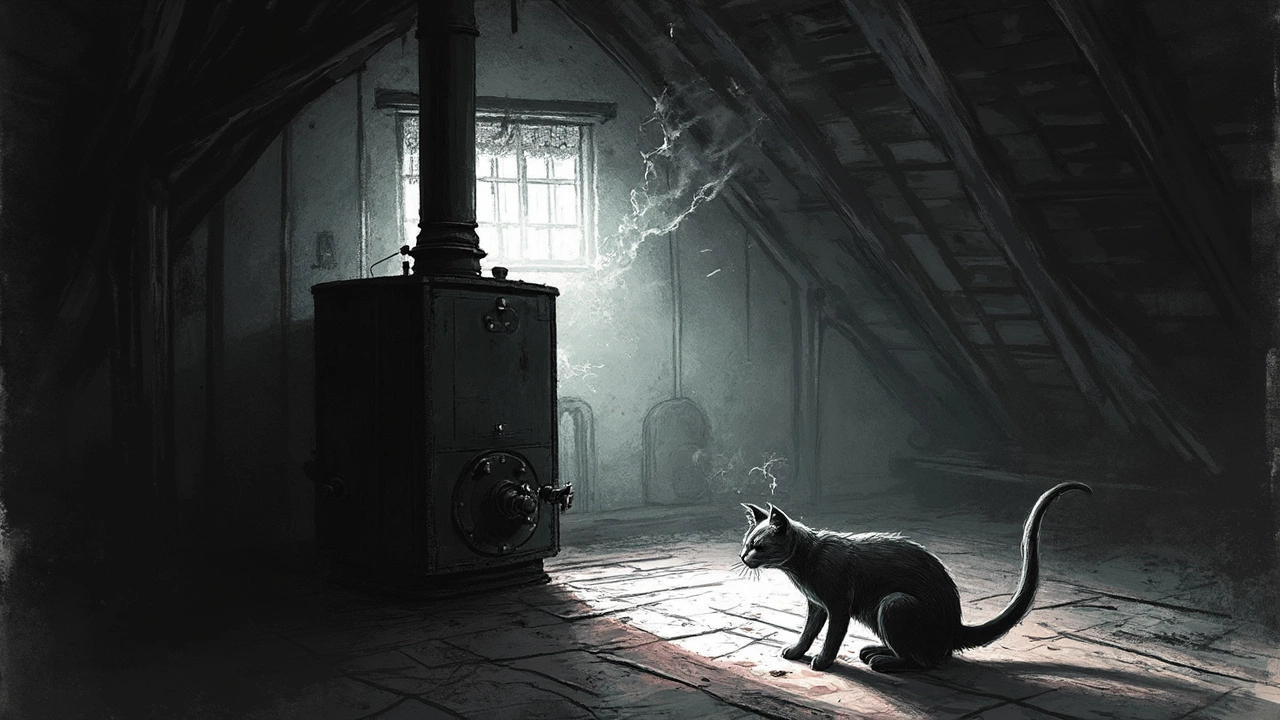Ever turned up the thermostat and still shivered under a pile of blankets? You're not alone. A boiler refusing to cooperate is not just frustrating; it can leave you under a cold spell when you least expect it. Knowing a bit about what's going on inside that mysterious contraption in your basement can help you dodge those unpleasant surprises.
Boilers sometimes stop providing heat or hot water, and tracking down the culprit is key. It might be a problem with the thermostat, or maybe the boiler's pressure is too low. Sometimes, the pilot light goes out, or there's an issue with the valves. Knowing these basics can make troubleshooting easier, and you'll get back to cozy warmth in no time.
No Heat or Hot Water
There’s nothing worse than expecting a warm shower, only to be greeted by frigid water straight from the Antarctic. When your boiler isn’t providing heat or hot water, it can be a sign of a few common issues.
The first thing to check is your thermostat. This might sound too simple to be true, but you'd be surprised how often it's just a case of the settings being off. Make sure it’s set to the correct temperature and isn't on 'setback' mode.
If the thermostat is not the problem, then the issue might be with the pilot light. Especially in older boiler models, the pilot light can go out, leaving you in the cold. Check if it's lit. If not, follow the boiler’s manual to safely relight it.
Another usual suspect is low boiler pressure. Boilers need a certain level of pressure to operate properly. Have a glance at the pressure gauge; if it’s under 1 bar, it’s too low. You can usually restore pressure yourself with a filling loop. However, if you’re unsure, calling a boiler repair expert is a safe bet.
In some cases, the problem could be a faulty valve or a broken component. The diverter valve, which directs hot water to your taps and radiators, can sometimes malfunction. If that happens, it might require a replacement or repair.
- Check the thermostat settings.
- Inspect the pilot light or reset buttons.
- Verify the pressure gauge readings.
- Consider professional help for valve issues.
Address these issues promptly to restore your boiler's function and keep your home warm. It might seem daunting initially, but tackling these problems can be quite straightforward and could save you from much colder days ahead.
Strange Noises from the Boiler
So, your boiler has turned into a bit of a chatterbox, eh? Hearing clanks, bangs, and whistles coming from it is like it's cooking up a secret plan. But don't worry, these sounds are often just its way of telling you something's up.
First off, let's play detective. A banging noise might mean there's limescale or sludge build-up. This is a common issue known as 'kettling', and it's pretty much your boiler's way of saying it needs a clean-up. Limescale loves to settle in places like heat exchangers, reducing efficiency and causing overheating. What you hear is the water boiling in spurts, just like a kettle.
If it's a whistling or gurgling sound, air could be trapped in the pipes. This trapped air forms bubbles, which don't mix well with water and cause those odd sounds. Bleeding your radiators can sometimes solve this by releasing the air.
On the other hand, if the noises sound more like a low rumble or hum, it's possible the pump is running too fast. A quick fix often involves adjusting the pump's speed settings.
Regardless of the sound, strange noises are worth checking into sooner rather than later. Ignoring them can lead to pricier boiler repair bills. Regular maintenance, like flushing the system and balancing the radiators, can help keep your boiler's vocal talents to a minimum. No one wants a noisy neighbor, even if it's right in your basement!

Boiler Leaking Water
Noticing puddles around your boiler? Water leaking can range from a minor inconvenience to a sign of a bigger issue. First things first, don’t panic. Grab a flashlight and see where the leak is coming from. It might save you a repair bill if it’s something you can fix yourself.
Leaks often happen because of pressure problems, and sometimes it's as simple as adjusting the boiler pressure. When pressure is too high, it can cause valves to leak. Check the pressure gauge and if it's above the recommended level (usually between 1 and 2 bars), you might need to release some pressure.
Another common issue is a faulty seal or worn-out washer around the joints or valves. If it’s a small drip, replacing these components might be all it needs. But if it’s a larger leak, or the boiler is more than ten years old, parts might be reaching their end of life, and professional help could be a better option.
Also, pay attention to where exactly the leak is coming from:
- If it’s from the bottom, it might be the drain cock.
- If it’s near the core, could be a problem with the heat exchanger.
- Leaks around the boiler's edges might mean you have a corrosion problem.
Sometimes, the problem could be as simple as a boiler repair technician needing to tighten a loose connection. Sounds minor, right? But loose connections can cause a decent amount of leakage.
Stay on top of your boiler maintenance to prevent such leaks. Inspect it regularly, and don't ignore small drips. Regular checks help avoid major repairs and keep it running smoothly.
Low Boiler Pressure
Ever noticed your heating system just isn't living up to its potential? Often, the root of the issue could be low boiler pressure. Believe it or not, this is a pretty common hiccup in the world of home heating.
Let's start with why this happens. Your boiler needs a certain amount of pressure to function properly, usually between 1 and 2 bars (check your boiler manual for the exact numbers). If it's lower, you'll probably notice weaker heating output. Low pressure often results from a water leak, hidden somewhere in the system, or after bleeding radiators which can reduce pressure.
So, how do you check if your boiler pressure is low? Simple. Look at the pressure gauge on the boiler; it looks like the speedometer on a car. If the needle's dipping below the green or safe zone, you've got low pressure.
Got a low-pressure problem? Here’s how you might fix it:
- Switch off the boiler and let it cool down a bit. Safety first!
- Find the filling loop; it's a small, flexible hose typically located underneath the boiler.
- Carefully open the valves on either end of the filling loop. You should hear water flowing. Keep an eye on that pressure gauge until the needle moves into the green zone.
- Once it's in the green, close the valves and ensure they're securely shut.
- Turn the boiler back on, and you should be good to go!
If you're doing this too often, it might be a good idea to have a professional check for leaks or other issues. Remember, fixing low pressure by yourself should only be a temporary solution.


